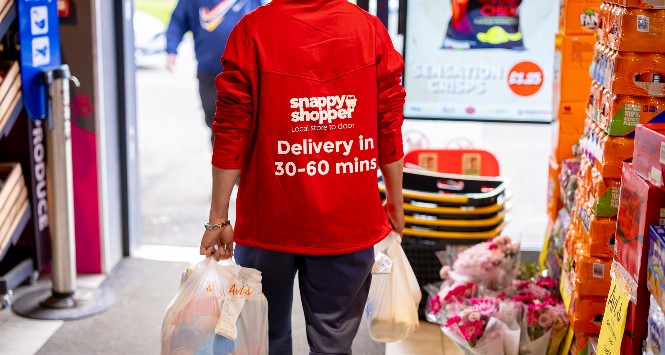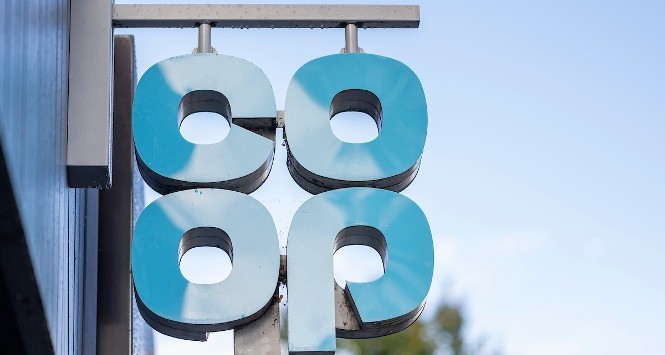It’s clear the pandemic radically changed the way consumers live and shop, and a new Barclaycard study has taken a closer look at which lockdown habits have turned into long-term legacies, and which have already been abandoned.
By Antony Begley
There is absolutely no doubt that the Covid-19 pandemic and its accompanying lockdowns had a dramatic effect on the way that Scottish consumers live and shop. The world was turned upside down and everything that we would once have described as normal went straight out the window.
The expectation that a ‘new normal’ would somehow come along and establish itself was, with hindsight, a little optimistic and it will probably be years before Covid truly retreats into nothing more than memory.
For the time being, the hangover of the pandemic remains a very real and very important factor in the lives of Scotland’s local retailers. So what exactly has the pandemic done to the world and how can retailers best respond?
That’s a question tackled in a fascinating new consumer trend study by Barclaycard and – spoiler alert – it doesn’t make for comfortable reading.
The analysis from Barclays combines hundreds of millions of customer transactions with consumer research to provide an in-depth view of UK spending.
The insight covers a range of lockdown-related topics like online grocery ordering, food-to-go, shopping locally, pricing and home delivery. It aims to establish which lockdown legacies look likely to endure, and which are already being dumped.
The report identified three key Lockdown Legacies and three key Lockdown Leave Behinds – and it’s the Leave Behinds that make for the most interesting, if unwelcome, reading for local retailers.
- Price overshadows support for shopping locally
Now that almost seven in 10 (68%) shoppers say they are looking for ways to reduce the cost of their weekly shop, Brits are increasingly prioritising lower prices over their desire to shop locally. Three in 10 (30%) of these shoppers say they are buying from larger supermarkets because prices tend to be lower than in smaller, independent shops. - Avoiding takeaway temptation
Over half (52%) of consumers who ordered takeaways during the lockdowns now spend less on takeout food than they did during that period. - Dwindling deliveries
The number of home deliveries has fallen by an estimated 22% compared to during the lockdowns.
Price over local
Lockdown, as we all recall, saw a shift to supporting local businesses and a growing desire to back local and regional economies with independent businesses like convenience stores, butchers and bakers seeing a huge 28.6% increase in spend in 2020 compared to the year before.
The new report, however, suggests that shoppers are rapidly returning to their old ways, no doubt accelerated by the cost-of-living crisis. These days, almost seven in 10 (68%) shoppers say they are looking for ways to reduce the cost of their weekly shop and are increasingly prioritising lower prices over their desire to shop locally.
Three in 10 (30%) of these shoppers are buying from larger supermarkets because ‘prices tend to be lower’ than in smaller, independent shops, and nearly a quarter (23%) have shifted their spending because larger stores ‘tend to have more options’ when it comes to budget and value ranges.
It’s not all bad news though: millions of British consumers have remained loyal to local businesses. A quarter (25%) say lockdowns made them realise how much they value their local high street, so still try to support it where possible and 23% now try to spend locally rather than shopping online.
Takeaway gone away
When it comes to takeaways and food-to-go, over half (52%) of consumers who ordered takeaways during the lockdowns say they now spend less on takeout food than they did during that period, with 25% reporting they now spend significantly less.
Meanwhile, the proportion of grocery spending online compared to in-store has risen compared to pre-lockdown levels. Before the UK’s first lockdown in March 2020, only 10% of grocery shopping was done online – this rose to 16% during the lockdowns and has now settled at 13.4% [February 2023].
This indicates that, of the millions of shoppers who switched to buying groceries online during the lockdowns, many more have made the change permanently.
Dwindling deliveries
One of the biggest growth industries under lockdown was home delivery and one of the biggest concerns at the time was whether or not this trend would be sustained post-lockdown. If the report is correct, the answer is a clear ‘no’.
The number of home deliveries has fallen by an estimated 22% compared to during the pandemic. Shoppers report that they received an average of 5.0 deliveries per month during this period, compared to only 3.9 per month now.
In addition, 22% of shoppers say they currently receive no online deliveries at all, compared to only 16% during the pandemic.
Another ecommerce trend that has fallen in popularity since lockdown restrictions lifted is Click & Collect. Of the 53% of consumers who have used Click & Collect, one in three (31%) now use it less regularly than they did during the lockdowns, compared to just one in five (19%) who have increased the number of orders they choose to pick up in-store.
- Covid careers
The majority who started a new venture (86%) are still running their business, with over a third (34%) saying it has become their main source of finance. - In-trend insperiences
Almost half (46%) of those who signed-up to pre-prepared meal-kits and 35% who started using make-your-own meal-kit subscriptions now spend more on these services each month. - Pandemic pastimes
Gardening, exercising and baking are reported as the most popular pursuits Brits have continued to enjoy since life returned to normal.
Real legacies
So much for the Lockdown Leave Behinds. But what about the trends that have stuck? Disappointingly, the three key Lockdown Legacies identified by Barclaycard don’t appear to highlight obvious, direct opportunities for local retailers.
The first is badged as ‘Covid careers’ and centres around a big shift towards new business start-ups and side hustles, especially among furloughed employees who found themselves with extra time on their hands.
Barclays’ data shows that almost one-in-three consumers (28%) has started a new small business or found a way to supplement their income since the first national lockdown three years ago.
The majority who started a new venture (86%) are still running their small businesses or side-hustle, with over a third (34%) saying it has become their main source of income.
The second major trend is a shift to ‘In-trend insperiences’ or, to put it plainly, shoppers making more of their time at home: meal-box subscriptions and digital entertainment being the two most obvious examples.
There may be an opportunity here for local retailers to re-imagine the traditional big night in occasion, more in in line with the latest trends as highlighted by the survey. Why not try creating the next generation of Meal Deals with new versions of the meal-box theme? A bag (or box) of ingredients, complete with a bottle of wine, a 4-pack of beer, some soft drinks, confectionery and snacks for a set price?
Digital entertainment subscriptions rocketed under lockdown, up 40.5% in just the first few months of restrictions and even after the easing of restrictions in March 2021, digital content and subscription growth has averaged 41% throughout the post-lockdown period versus February 2020. In other words, the big night in is a bigger opportunity than ever. Are you making the most of that opportunity and tailoring your offer for the masses sitting at home watching Netflix or Sky Sports with friends and family?
The final Lockdown Legacy contained in the report is ‘Pandemic pastimes’, with more than six in 10 (62%) shoppers seizing the opportunity to learn a new hobby or skill – and millions kept up their pandemic pastimes after lockdown had gone. Gardening (20%), exercising (19%) and baking (16%) are reported as the most popular pursuits shoppers have continued to enjoy since life returned to normal – and all three offer opportunities to switched-on retailers.
Marc Pettican, Head of Barclaycard Payments, commented: “From ‘insperiences’ to online fitness, the pandemic shaped and accelerated several notable shifts in consumer behaviour.
“However, the cost-of-living crunch is slowly unpicking some of these trends as consumers have had to become more selective about how and where they shop. For example, the boom in takeaways has tapered off, as has spending at local independent stores, as consumers continue to look for ways to cut costs to help make ends meet.”
Act now
There was always going to be an extended period of flux in the wake of Covid and the local retailing sector knew that some of the habits formed under lockdown would persist and some would fade away. Things are becoming a little clearer and, as usual, the picture is a complex mix of challenge and opportunity.
The clear trends identified in the Barclaycard report, however, offer a decent indication as to which way the consumer wind is blowing and there are some obvious opportunities buried among the rubble. The end of Covid is a long way off yet, but keeping in touch with what your customers want is one way of staying on the right track to the end of this long and winding tunnel.







